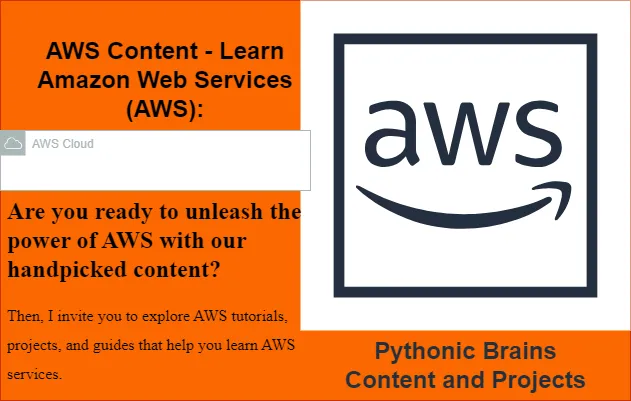Welcome to our Cloud Computing hub, your go-to resource for everything related to cloud technology and services.
As cloud computing resources and AWS projects reshape how businesses operate and innovate, our goal is to provide clear, actionable insights into this evolving field.
Whether you’re:
i. New to the cloud or
ii. Looking to deepen your expertise,
This page introduces essential topics and real-world applications to guide your journey.
Welcome to our Cloud Computing category! Here, you will find the most relevant information on the topic of cloud computing: articles, guides, tutorials on the basics of cloud technologies, and the latest trends in their application.
It is crucial to lay a foundation on the subject matter before I explain more about what to expect from us. Understanding what cloud computing is first will go a long way in making you appreciate our intention and content chronology in the blog’s cloud computing segment. Therefore, before we move to the subcategories, read the summary below on what cloud computing is, and then move to the description of the subcategories.
What is Cloud Computing?
In today’s society, cloud computing is considered an innovative technology that is changing how data is stored, and applications are developed and hosted. It is regarded as revolutionary due to various factors.
First, it eliminates the need for physical hardware by enabling users to store their data on servers that are located and operating far from them (remote servers). For example, I operate and manage my AWS Account from Kenya. When creating the individual Free Tier AWS Account as a participant or learner in the AWS ReStart program, I selected the “AWS us-east-1” region in Northern Virginia. Interestingly, Nairobi, Kenya, is 12,138 Kilometers or approximately 7543 Miles. Therefore, it is far away from my physical location.

Thus, I access, operate, and manage on-demand computing resources and services hosted and run on servers in the USA from Kenya over the internet. This is a perfect example of how cloud computing has eliminated the need for physical hardware for the user, thus enabling them to store and access data from servers far away.
Second, the technology is flexible, allowing individuals, businesses, and organizations to increase or decrease resource utilization as they wish. Cloud computing also has the added advantage of allowing firms to cut down immensely on IT expenses since they only pay for the services that they require. However, security is a paramount concern, and cloud providers have put in place adequate measures to ensure that data and privacy are well protected. Furthermore, cloud computing easily and securely facilitates information technology infrastructure and business resource sharing. As a result, individuals, businesses, or organizations can simultaneously work on the same data and(or) with the same resources.
Cloud Service Models
Moreover, different cloud service platform providers such as AWS, Google Cloud, and Microsoft Azure use three main types/models to serve their customers. The three prominent are:
- 1. IaaS – stands for Infrastructure as a Service.
- 2. SaaS – the acronym for Software as a Service.
- 3. PaaS – representing Platform as a Service.
Going further, this technology is vital for innovation because it allows for the rapid production and implementation of applications. In summary, cloud computing is the key to modernizing IT infrastructure and improving business processes.
To read more about web-based services, visit our comprehensive and research-based tutorial.
Next, let us review the particular subcategories for the cloud computing section of the Pythonic Brains blog. These include the Cloud Computing Articles and AWS Content standalone categories.

1. Cloud Computing Concepts Articles
This category includes In-Depth Cloud Computing Articles. Start your transformative journey by discovering and using our extensive library of cloud computing articles.
As we can all agree, the cloud is one of the rapidly growing fields of technology, and we need to take advantage of these trends.
As a result, our articles are designed to help anyone from a novice to an expert learn more about the subject and improve their knowledge of cloud architecture, security, cost optimization, and multi-cloud solutions.
2. AWS Content Category
Are you ready to unleash the power of AWS with our handpicked content?
Then, I invite you to explore AWS tutorials, projects, and guides that help you learn AWS services such as EC2, S3, Lambda, and many more.
It doesn’t matter whether you are a beginner or an advanced-level AWS engineer.
Our blog is your one-stop destination with all the resources necessary to help you master AWS services.

